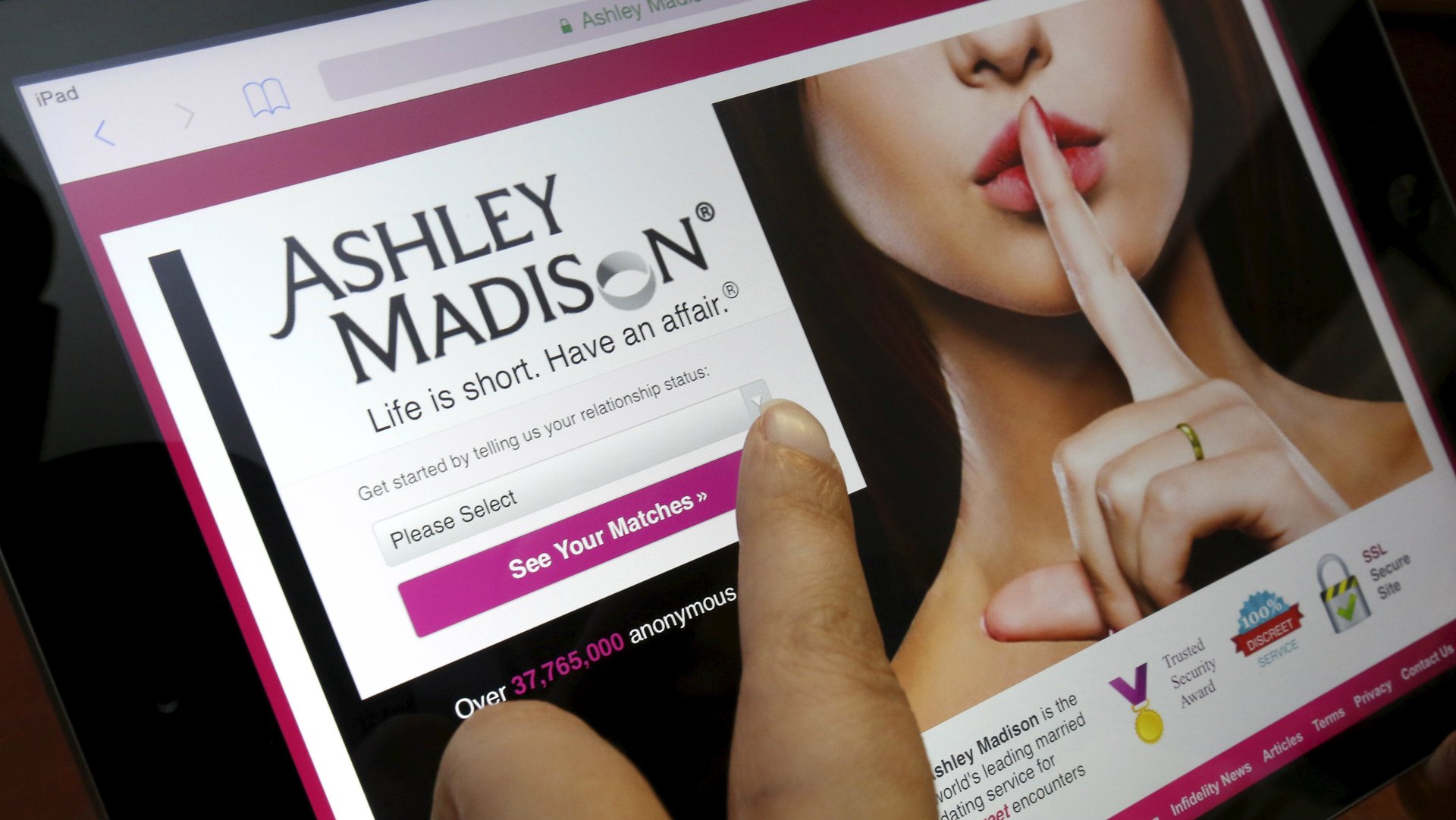Don’t let Ashley Madison and Tinder fool you, millions of women use online dating
Ashley Madison’s hack gave insight to a world where millions of men swapped messages with female-impersonator bots. But though more men than women use online dating overall, it seems that some major dating websites successfully subvert this trend.


Ashley Madison’s hack gave insight to a world where millions of men swapped messages with female-impersonator bots. But though more men than women use online dating overall, it seems that some major dating websites successfully subvert this trend.
In general, more men than women use online dating—some 13% of men compared to 9% of women in the United States, according a Pew Research Centre study in 2013. Men also use their dating accounts more, according to a 2010 study of online dating published in American Economic Review (pdf): Men view three times more profiles than women, and send three times as many first-contact emails.
Ashley Madison is an extreme example of this male-heavy ratio. Prior to the July hack, the adulterous dating website claimed that 30% of its clients were female. But just 15% of the 35 million hacked records released in August belonged to women, and it was found that the adulterous dating website had created 70,000 bots to impersonate women and send messages to men on the site.
Meanwhile, a 2015 study of the 91 million people who use location-based digital matchmaking apps, such as Tinder and Hinge, found that 62% of users are men.
Andrew Colman, professor of psychology at the University of Leicester, told Quartz that this dynamic fits with conventional gender roles, explaining:
Even in these relatively progressive times it still seems to be an unspoken convention that it’s up to men to ask for a date and women to agree or refuse. That’s perhaps why women are more in the role of hunting for partners, and women play the role of waiting to be hunted. There’s a built-in asymmetry which, to my intuition as a psychology, would explain why you get more men than women joining the sites.
But though men dominate online dating overall, a profile of specific dating sites gives a more nuanced picture. Quartz asked the dating sites below for their most recent gender ratios, but only Match and eHarmony replied. The other figures come from 2008 demographic reports by media measurement service Quantcast.
Dating sites with high entry barriers and a focus on more serious relationships seem to be more popular with women. eHarmony creates a barrier to entry by asking all members to fill out a lengthy questionnaire before joining, while both eHarmony and Match users show their seriousness by paying for a subscription.
One dating app, The Inner Circle, has banned women in London from joining for one month, to try and even out its gender ratio. Roughly 60% of the app’s 18,000 UK members are female, and further women will be blocked from joining until Oct 2.
The Inner Circle bills itself as an elite app and screens all applications. Chief executive David Vermeulen believes this selection process has attracted more women. Other dating sites “can attract some weird people” he told Quartz, but Inner Circle offers an alternative, as “we offer the highest quality of single professional men.”
The average age of users is 31 years old, adds Vermeulen, which he says is when people tend to be more serious about finding a long-term relationship.
The theory that women are evolutionarily programmed to seek long-term relationships while men are only interested in sex is far from proven, but it seems that these stereotypes do play out in the online dating world.
Sites that promote casual hook-ups and extra-marital affairs are dominated by men but, when it comes to more serious relationships, women are just as interested in online dating.